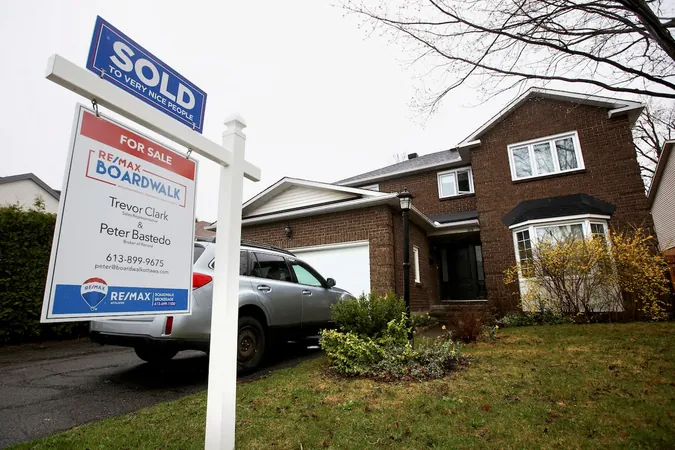
Uncertain Future Ahead for Alberta's Massive Suffield Military Base Post-British Departure
2024-12-14
Author: Olivia
Uncertain Future Ahead for Alberta's Massive Suffield Military Base Post-British Departure
The sprawling Canadian Forces Base Suffield, located in southeastern Alberta and covering an area more than twice the size of New York City, is facing a precarious future following substantial changes in its operational use.
Situated approximately 260 kilometers east of Calgary, Suffield is the largest military training ground in Canada, encompassing nearly 2,700 square kilometers. For decades, the base has served as an important site for the British Army, which conducted extensive armor training and exercises there, beginning in the early 1970s. Prince Harry notably trained there in 2007, becoming a familiar sight in Calgary’s bars before his deployment to Afghanistan.
However, the landscape shifted dramatically in 2020 due to the disruptions brought on by the COVID-19 pandemic, which halted many military exercises. By 2023, the U.K. Ministry of Defence made the announcement that it would significantly reduce its activities at Suffield, ceasing all training operations for a minimum of two years, leading to concerns over the base's long-term viability.
The British Army has since returned all its combat vehicles, including tanks and armored personnel carriers, with the U.K. Ministry of Defence stating, “The U.K. Armed Forces are not currently conducting large-scale training at British Army Training Unit Suffield.” They noted that dialogue with the Canadian government is ongoing to plan future uses for the base.
Canadian Defence Minister Bill Blair commented on these discussions, emphasizing the importance of CFB Suffield for various training operations. While the base remains active for Canadian Forces reserve units—some deploying with NATO to Latvia—its vibrancy has significantly declined. Recent training exercises have revealed a stark contrast to the past when the area buzzed with British military presence, as the base appeared notably sparse during both a weekend in late October and a snowy December day.
The surrounding community, including the nearby Village of Ralston, still offers military housing and essential facilities, but the decrease in military activity has left its mark. Lt.-Col. Tom Bradley, commander of the South Alberta Light Horse regiment, noted the quietness compared to previous years, saying, “It used to be hard for us to get to Suffield. Now if you want to book part of the training area, you can.”
The size of Suffield continues to be attractive for military training, offering ample space for live fire exercises and unique chemical training opportunities—one of the few places in the Western world where such training can be safely conducted.
Despite the ongoing conversations with the U.K., experts express concern over Canada’s military readiness. Rob Huebert, interim director of the Centre for Military Security and Strategic Studies at the University of Calgary, pointedly remarked that Suffield's underutilization reflects Canada’s lagging military investments in comparison to NATO allies. He anticipates a shift in military spending, especially given geopolitical tensions involving Russia, which may renew interest in training at Suffield.
The economic impact of the British military presence is also evident in the local community. The closure of the sole pizza restaurant in Suffield, after nearly four decades of service, underscores the loss felt by local businesses that relied on military personnel for patronage. Dan Hamilton, reeve of Cypress County, articulated the community's hopes for the return of British troops, acknowledging their significant contributions to the local economy.
As discussions continue, the future of CFB Suffield hangs in the balance, echoing broader concerns regarding the strategic military capacity of Canada on the global stage. Will Alberta's military training giant reclaim its former glory? Only time will tell.









 Brasil (PT)
Brasil (PT)
 Canada (EN)
Canada (EN)
 Chile (ES)
Chile (ES)
 España (ES)
España (ES)
 France (FR)
France (FR)
 Hong Kong (EN)
Hong Kong (EN)
 Italia (IT)
Italia (IT)
 日本 (JA)
日本 (JA)
 Magyarország (HU)
Magyarország (HU)
 Norge (NO)
Norge (NO)
 Polska (PL)
Polska (PL)
 Schweiz (DE)
Schweiz (DE)
 Singapore (EN)
Singapore (EN)
 Sverige (SV)
Sverige (SV)
 Suomi (FI)
Suomi (FI)
 Türkiye (TR)
Türkiye (TR)